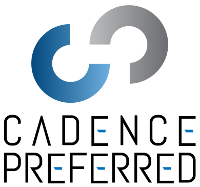5 Best Practices For a Successful Paid Search Campaign
Google reports that it processes an astonishing 70,000 search queries every single second, equating to over 2-trillion global searches each year.1 With volumes that enormous, who would want to pass up the opportunity to capitalize on all that traffic to get noticed and drive new business?
With a successfully executed Google pay-per-click (PPC) campaign, businesses generate an average of $2 in income for every $1 they spend,2 which makes it seems like a no-brainer – yet it takes a little extra effort to create a campaign that will generate a return. Here we’ve compiled some paid search best practices learned from developing more than 100 Microsoft Partner digital campaigns.
- Set clear goals: One of the most overlooked steps before jumping into a paid search campaign (or any marketing campaign, really) is not clearly defining your goals and what you intend to get out of it. Are you trying to generate brand awareness for a new product or offer? Do you want to grow existing revenue? Or generate leads through a new piece of gated content? Defining your goal can help you narrow the focus of your campaign so you can develop more targeted, effective ads. And it’s important to keep this in mind – you don’t need to cover everything in a single campaign! It is far more effective to create several smaller, more targeted campaigns that are aimed at a single purpose, audience, or call-to-action.
- Be deliberate in your keyword selection: Being methodical about the keywords you bid on can help keep costs down while ensuring you’re bidding on the terms customers are actually looking for. Spend some time thinking about the words your customers might use to search for your product or service, what their pain points are that they’re trying to resolve, or any related concepts that could lead them to discover your offering (e.g., particular compliance or security requirements). You should also make sure to bid on your own branded terms – not only do branded keywords tend to provide higher click-through rates (since this means they were searching for your brand name or product already and your ad will be highly relevant to them), but it keeps your competitors from capitalizing on your branded terms instead. It’s not a bad idea to also bid on your competitors’ terms for the same reason.
- Don’t forget about ‘negative’ keywords: Along with being selective in the keywords you do want to bid on, it can also help to specify those you don’t. Keep in mind that not all campaigns will have a need for this, but in certain instances, it can mean the difference between blowing your ad budget on the wrong kinds of clicks. For example, if your campaign is for a cloud security service but you only offer it on Azure, you may want to add negative keywords to exclude searches related to cloud security for other platforms. So in this instance, you could add negative keywords for terms like “AWS,” “Oracle,” etc., which will help filter your ad from being shown or clicked when someone searches for say ‘cloud security for AWS.’
- Target by audiences, too: While keyword targeting remains important, audience targeting is becoming equally important in successful search marketing, especially for B2Bs. In the technology industry, for instance, often times ad messaging will differ depending on whether you’re addressing a business decision maker (BDM) or say a network administrator – the BDM would care about the ROI and business benefits you can deliver, while the network administrator would care more about the technical advantages. By not only identifying your target segments or roles, but tailoring your ad messaging to each in separate campaign groups, you ensure your ads are as relevant as possible and therefore more likely to generate clicks. To take things a step further, you can also leverage Google’s “Customer Match” feature, which helps you reach people with similar demographics and behaviors as your initial audiences.
- Use tailored landing pages: While the initial goal of a paid search campaign is to get your prospects to click your ad, that’s only half the work – the other half comes after they click. Your ads will be driving to a landing page, regardless of your chosen call-to-action (download a resource, get a free trial, learn more, etc.), and it’s important to ensure this page is highly relevant to the ad that they clicked on. Don’t just bring prospects to your homepage and expect them to navigate around to find the content or offer that your ad was about. Bring them to a dedicated landing page that clearly connects to the subject and call-to-action in your ad and enables them to follow through on the action intended.
Still need help getting started with your paid search campaign? Connect with us at Cadence Preferred today and see how our experts can help!

